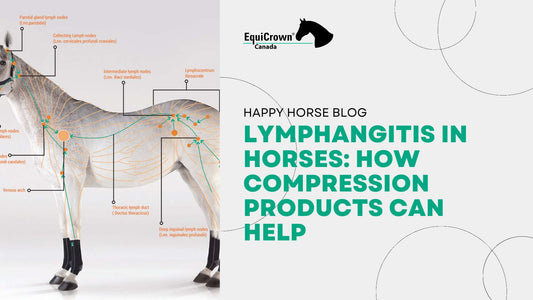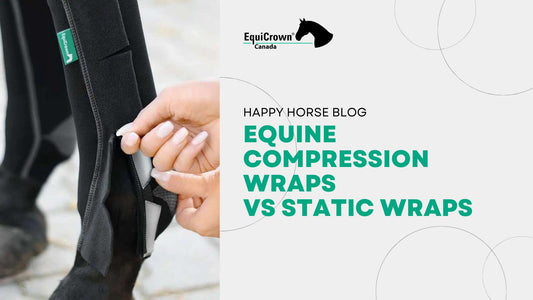
Treating Lymphangitis in Horses: Compression Wraps Vs. Drugs
Lymphangitis is the cause of a lot of frustration among horse owners. The condition can be hard and expensive to treat, and it has a slow recovery. However, it’s a relatively common problem, affecting horses of all breeds and ages. Lymphangitis can be managed, but not cured.
Its onset is abrupt, and it’s an emergency that requires immediate treatment, so it’s best to stay informed and contact your veterinarian if you notice any symptoms. Let’s take a closer look at how this condition affects horses, what are the symptoms and treatment options.
Next, we’ll provide all the information you need about the available treatments with both drugs and compression wraps to help you be familiarized with the options you have if your horse gets infected with Lymphangitis.
What Is Lymphangitis
Lymphangitis is a recurrent bacterial infection of the lymphatic system that affects the horse’s lymphatic system and can result in swelling of the horse’s legs and other infection symptoms.
It is usually caused by bacteria on the skin that somehow gets inside the lymphatic system under the horse’s skin.
What are the types of lymphangitis in horses?
More types of lymphangitis affect horses, although Sporadic lymphangitis is the most common cause of infection.
- Sporadic lymphangitis - caused by bacteria on the skin
- Epizootic lymphangitis - caused by a fungal infection
- Ulcerative lymphangitis - occurs when an abscess appears under the skin
How lymphangitis happens
Any wound, even a tiny one, can be the entrance point of the infection under the skin. Most of the time, it can go unnoticed, and sometimes it can’t even be identified. Equine pastern dermatitis - known as Scratches or Mud Fever - can also cause wounds that can facilitate the entrance of bacteria.
The lymphatic system drains fluid from the legs trying to filter and remove the pathogens but is overwhelmed, and vessels become blocked, causing edema.
What are the symptoms of lymphangitis?
Let’s take a closer look at the symptoms of lymphangitis to help you recognize this condition as soon as possible and get urgent care for your horse.
- An extremely swollen limb appears in most cases.
- The affected limb is hot and painful to touch.
- The horse has increased temperature, heart, and breathing rate.
- Sweating can appear.
Treating Lymphangitis using drugs and compression wraps
You must get urgent vet care for your horse as soon as possible. Getting started with the treatment at an early stage can decrease the recovery time and help your horse get back on his feet faster.
To get an efficient treatment for Lymphangitis, you should use both drugs and compression wraps to address all the disease aspects.
The conventional treatment recommended by the veterinarian consist in:
- administration of antibiotics
- anti-inflammatory medications
- physical therapy
- compression wraps
As you can see, the treatment of the bacteria itself is relatively straight-forward. Still, the recovery phase might also require extra attention to ensure the issue won’t recur and become chronic. And that’s where the EquiCrown compression wraps come into play.

Until recently, there has been little innovation regarding horse leg bandages. Same materials and technologies have been used for decades when it comes to wrapping. Now, the technology has advanced, and there are anti-microbial fabrics available that can provide better leg care for your horse.
Our compression wraps are specially built to help with the long-term management of lymphangitis, supporting the horse to recover to its initial state as fast as possible and reducing reinfection risks.
Once the initial infection is under control, here are the next steps you should take to manage edema and help recovery using our EquiCrown compression bandages:
- Contact us to get personalized advice depending on your horse’s condition.
- The affected leg is sized for an EquiCrown compression wrap.
- The parallel leg will also have to wear compression wrap (in some severe cases, we might recommend wrapping all four legs)
- The EquiCrown wraps help move lymph fluid out for secretion and bring oxygen-rich blood to the legs.
- The affected legs will wear compression for a period determined by our office along with your veterinarian.
In a nutshell
Lymphangitis can happen anytime, so it’s best to be prepared and know all your options. To help you get the most effective treatment for lymphangitis, we can work with your vet to provide the most efficient compression wraps available.
At EquiCrown Canada, we are a leader in lymphangitis management, and our top priority is returning your horse to health and full activity as soon as possible. Reach out today to get more details on how we can help with lymphangitis management.


